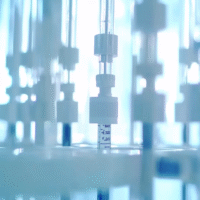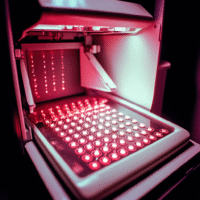Understanding the Study Results
This study looked at a treatment called bilateral transcutaneous posterior tibial nerve stimulation (BT-PTNS) for people suffering from obstructed defecation syndrome (ODS). ODS is a condition that makes it hard to have bowel movements and can seriously affect a person’s quality of life.
What Worked?
- BT-PTNS Treatment: Patients who received BT-PTNS along with their regular medical treatment showed a big improvement in their symptoms. They had a 10-point reduction in their ODS score after 6 weeks, which means they felt better.
- Quality of Life: The quality of life for these patients improved significantly. They reported a 65% improvement compared to only 37% in those who received medical treatment alone.
- No Side Effects: There were no reported side effects from the BT-PTNS treatment, making it a safe option.
What Didn’t Work?
- Medical Treatment Alone: Patients who only received medical treatment did not see as much improvement. Their symptoms improved, but not as significantly as those receiving BT-PTNS.
How Does This Help Patients and Clinics?
This study shows that BT-PTNS can be an effective and safe treatment for patients with ODS who do not have any physical blockages. This gives doctors a new option to help their patients feel better and improve their daily lives.
Real-World Opportunities
- Clinics can start offering BT-PTNS as a treatment option for patients with ODS.
- Doctors can combine this treatment with existing medical therapies for better results.
- Hospitals can conduct more studies to gather data on long-term benefits and standardize treatment protocols.
Measurable Outcomes to Track
- Changes in the Modified Obstructed Defecation Syndrome (MODS) score.
- Improvements in the Patient Assessment of Constipation Quality of Life (PAC-QOL) scores.
- Electromyography results of pelvic floor muscles.
AI Tools for Implementation
- Consider using AI tools for patient management and tracking outcomes, which can help in analyzing the effectiveness of BT-PTNS.
- AI can assist in scheduling and monitoring patient progress, making it easier for clinics to manage treatments.
Step-by-Step Plan for Clinics
- Learn About BT-PTNS: Educate staff about the BT-PTNS procedure and its benefits.
- Start Small: Begin offering BT-PTNS to a small group of patients with ODS.
- Monitor Results: Track patient outcomes using MODS and PAC-QOL scores to evaluate effectiveness.
- Gather Feedback: Collect patient feedback to understand their experience and make improvements.
- Expand Gradually: If successful, increase the number of patients receiving BT-PTNS and consider integrating it into routine care.
For more details on this research, you can read the full study here.
























